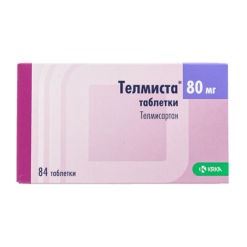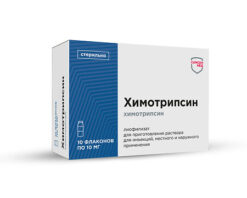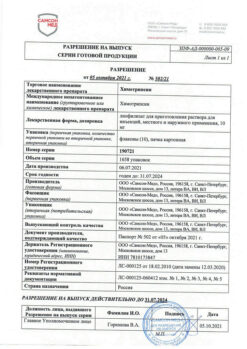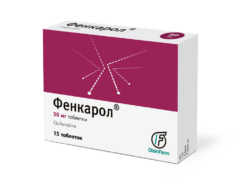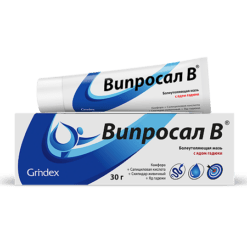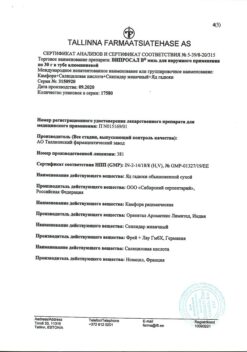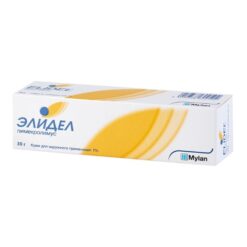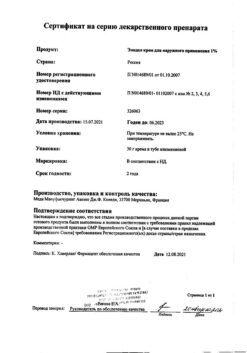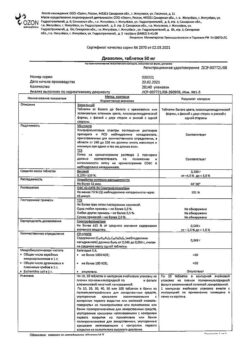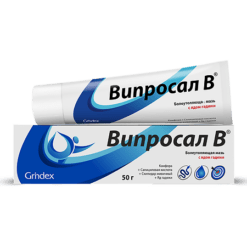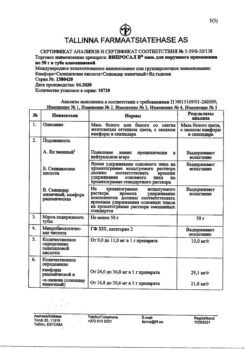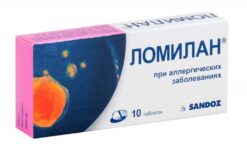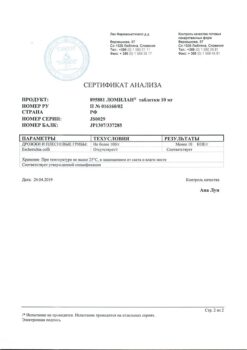No products in the cart.
Vero-Bleomycin, lyophilizate 15 mg
€1.00
Out of stock
(E-mail when Stock is available)
Description
Bleomycin is used both as monotherapy and in combination with other cytostatics and/or radiation therapy for the treatment of squamous cell skin, head and neck, esophageal cancers;
lymphogranulematosis, non-Hodgkin’s lymphoma; reticulosarcoma, Kaloshi’s sarcoma in AIDS, osteogenic sarcoma;
Melanoma;
Germ cell and ovarian tumors; penile cancer, vulvar cancer, cervical cancer;
Metastatic pleurisy, ascites in the background of malignant tumors (treatment and prevention as a sclerosing agent).
Indications
Indications
Bleomycin is used both as monotherapy and in combination with other cytostatics and/or radiation therapy for the treatment of squamous cell cancers of the skin, head and neck, and esophagus; thyroid cancer;
lymphogranulomatosis, non-Hodgkin’s lymphomas; reticulosarcoma, Galoshi’s sarcoma in AIDS, osteogenic sarcoma;
melanoma;
germ cell tumors of the testicle and ovary; penile cancer, vulvar cancer, cervical cancer;
metastatic pleurisy, ascites against the background of malignant tumors (treatment and prevention as a sclerosing agent).
Pharmacological effect
Pharmacological effect
Antitumor agent – antibiotic
Special instructions
Special instructions
Treatment must be carried out under the supervision of a physician experienced in antitumor therapy.
For early detection of side effects during the treatment period, it is necessary to carry out: measuring body temperature every 3 hours after administration of the drug, examining the skin and visible mucous membranes at least 2 times a week, auscultation of the lungs, x-ray of the lungs once a month, blood and urine tests at least once a week.
Prescription for newborns, premature babies and young children is possible only for health reasons, under constant supervision.
Sensitivity to bleomycin increases in elderly patients.
Great care is required when using the drug after radiation therapy (especially in the chest, head and neck).
For ulcerative stomatitis and allergic rash, treatment is stopped; if pneumonia is suspected, treatment is immediately stopped and glucocorticosteroids are prescribed under the guise of antibiotics.
Oxygen is used with caution during surgical procedures; In operating rooms, the oxygen content in the air is recommended to be no more than 25%.
Women of reproductive age and men should use reliable methods of contraception during treatment with bleomycin and for three months after.
Avoid injecting the solution if there is a change in color or the presence of large particles. For administration, freshly prepared solutions are used.
Care should be taken when preparing the solution and when administering it; If the drug gets on the skin or mucous membranes, rinse them with plenty of water.
Active ingredient
Active ingredient
Bleomycin
Composition
Composition
1 bottle contains:
active substance:
bleomycetin hydrochloride (in terms of bleomycin) 15 mg;
excipients:
mannitol (mannitol).
Contraindications
Contraindications
Hypersensitivity to the components of the drug, severe renal failure, respiratory failure (pulmonary fibrosis, chronic interstitial pneumonia), decompensated heart failure, pregnancy, lactation.
With caution:
Suppression of bone marrow hematopoiesis, renal and/or liver failure, previous or concomitant radiation therapy to the chest area, varicocele, old age, childhood, acute infectious diseases of a viral, fungal or bacterial nature (including chicken pox, shingles).
Side Effects
Side Effects
From the respiratory system: interstitial pneumonia, pulmonary fibrosis, pleurisy with pain, cough, shortness of breath.
From the nervous system: headache, dizziness.
From the digestive system: loss of appetite, nausea, vomiting, diarrhea, weight loss (with long-term use); liver dysfunction.
From the urinary system: impaired renal function.
From the skin and skin appendages: hyperkeratosis, peeling, hyperemia, hyperpigmentation and itching of the skin, stretch marks, deformation and brittleness of nails, hyperesthesia of the skin and distal (nail) phalanges, hyperemia of the skin of the fingertips, scleroderma-like skin changes, stomatitis, alopecia.
Allergic reactions: urticaria, anaphylactoid reactions, idiosyncrasy (low blood pressure, confusion, fainting, fever, chills, wheezing).
From the reproductive system: azoospermia, amenorrhea.
Local reactions: phlebitis and thrombosis (if the rate of intravenous administration is exceeded); intrapleural injection – local pain.
Other: hyperthermia (2 hours after administration, with a maximum after 4-8 hours); bleeding due to rapid tumor disintegration; vascular disorders (including cerebral arteritis, stroke, myocardial infarction, thrombotic microangiopathy, Raynaud’s syndrome); pain in the area of tumor lesions; feeling of general malaise; rarely leukopenia; conjunctivitis, vulvitis and other manifestations of the mucous membranes (usually 2-5 weeks after the start of therapy after reaching total doses of 150-200 mg).
Interaction
Interaction
With the simultaneous administration of bleomycin with carmustine, mitomycin, cyclophosphamide and methotrexate, as well as with the use of oxygen (especially during surgery) and other drugs that have a toxic effect on the lungs (smoking), the risk of pulmonary toxicity increases.
With the combined use of bleomycin and vinca alkaloids, the risk of vascular disorders increases.
Myelotoxic drugs and radiation therapy increase the incidence of side effects.
Overdose
Overdose
Symptoms: low blood pressure, fever, rapid pulse and general symptoms of shock.
Treatment: symptomatic. For complications from the bronchopulmonary system, glucocorticosteroids and broad-spectrum antibiotics are prescribed.
Manufacturer
Manufacturer
Veropharm LLC, Russia
Additional information
| Manufacturer | Veropharm AO, Russia |
|---|---|
| Medication form | lyophilizate |
| Brand | Veropharm AO |
Related products
Buy Vero-Bleomycin, lyophilizate 15 mg with delivery to USA, UK, Europe and over 120 other countries.


